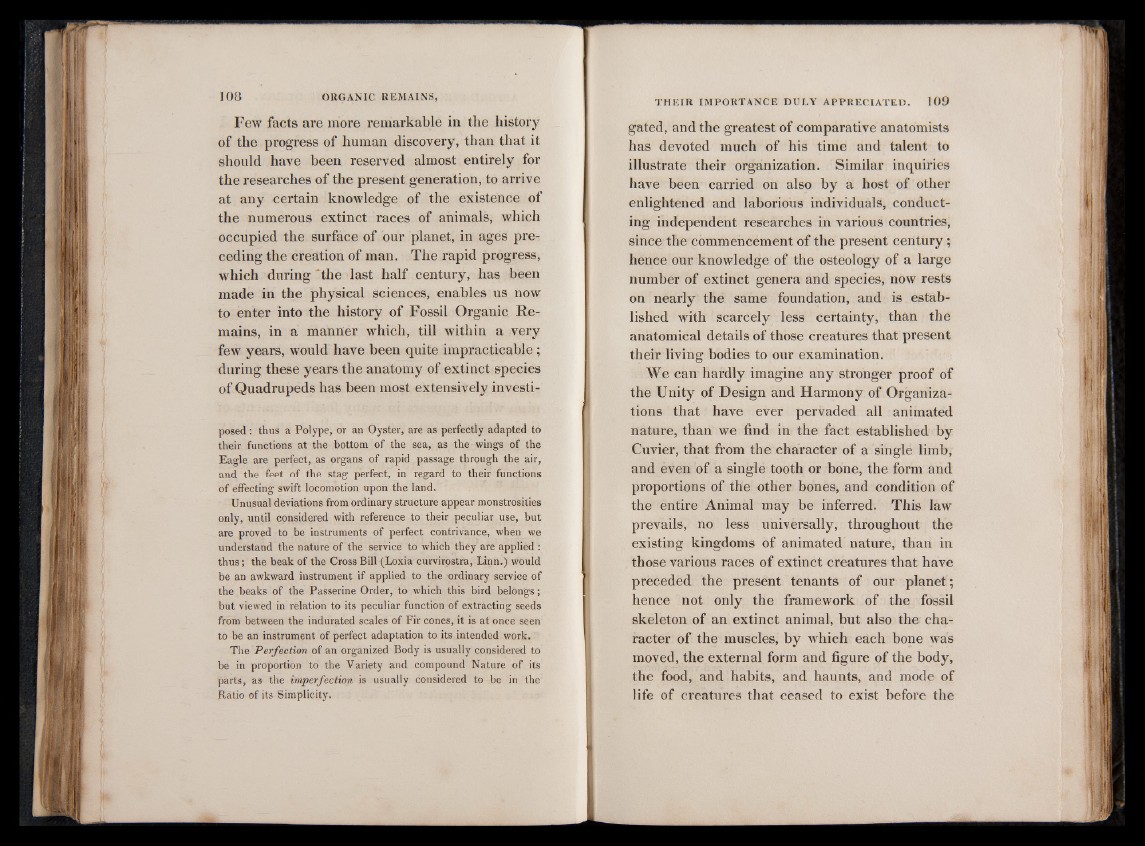
Few facts are more remarkable in the history
of the progress of human discovery, than that it
should have been reserved almost entirely for
the researches of the present generation, to arrive
at any certain knowledge of the existence of
the numerous extinct races of animals, which
occupied the surface of our planet, in ages preceding
the creation of man. The rapid progress,
which during 'the last half century, has been
made in the physical sciences, enables us now
to enter into the history of Fossil Organic Remains,
in a manner which, till within a very
few years, would have been quite impracticable ;
during these years the anatomy of extinct species
of Quadrupeds has been most extensively investiposed:
thus a Polype, or an Oyster, are as perfectly adapted to
their functions at the bottom of the sea, as the wings of the
Eagle are perfect, as organs of rapid passage through the air,
and the feet of the stag perfect, in regard to their functions
of effecting swift locomotion upon the land.
Unusual deviations from ordinary structure appear monstrosities
only, until considered with reference to their peculiar use, but
are proved to be instruments of perfect contrivance, when we
understand the nature of the service to which they are applied :
thus; the beak of the Cross Bill (Loxia curvirostra, Linn.) would
be an awkward instrument if applied to the ordinary service of
the beaks of the Passerine Order, to which this bird belongs;
but viewed in relation to its peculiar function of extracting seeds
from between the indurated scales of Fir cones, it is at once seen
to be an instrument of perfect adaptation to its intended work.
The Perfection of an organized Body is usually considered to
be in proportion to the Variety and compound Nature of its
parts, as the imperfection is usually considered to be in the
Ratio of its Simplicity.
gated, and the greatest of comparative anatomists
has devoted much of his time and talent to
illustrate their organization. Similar inquiries
have been carried on also by a host of other
enlightened and laborious individuals, conducting
independent researches in various countries,
since the commencement of the present century;
hence our knowledge of the osteology of a large
number of extinct genera and species, now rests
on nearly the same foundation, and is established
with scarcely less certainty, than the
anatomical details of those creatures that present
their living bodies to our examination.
We can hardly imagine any stronger proof of
the Unity of Design and Harmony of Organizations
that have ever pervaded all animated
nature, than we find in the fact established by
Cuvier, that from the character of a single limb,
and even of a single tooth or bone, the form and
proportions of the other bones, and condition of
the entire Animal may be inferred. This law
prevails, no less universally, throughout the
existing kingdoms of animated nature, than in
those various races of extinct creatures that have
preceded the present tenants of our planet;
hence not only the framework of the fossil
skeleton of an extinct animal, but also the character
of the muscles, by which each bone was
moved, the external form and figure of the body,
the food, and habits, and haunts, and mode of
life of creatures that ceased to exist before the